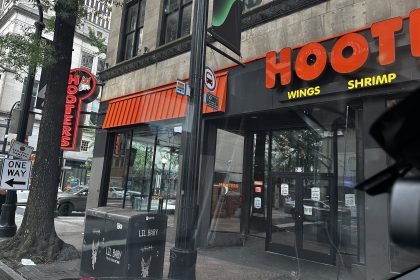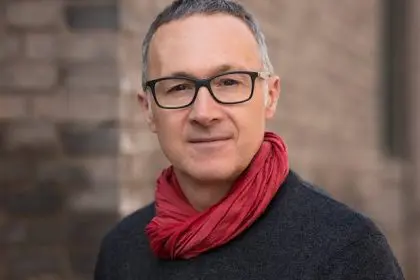
Iconic photos of civil rights leaders combined with images from the movement’s front lines, such as the first group of African-American Atlanta police officers, make up Wells Fargo’s Civil Rights Timeline mural dedicated in Atlanta’s West End community.
Sixty feet long and stretching half the circumference of the lobby of the West End Lee bank store, the mural starts with a 1928 photo of the office of the Atlanta Daily World newspaper and ends with a mid-90s re-enactment of the 1965 Selma to Montgomery march.
In between are photos of Dr. Martin Luther King Jr., former Atlanta mayor and U.N. Ambassador Andrew Young, former Atlanta Mayor Maynard Jackson, 1940s activist Ella Baker and others. Scenes depicted include a lunch counter sit-in, a meeting of Freedom Riders who helped desegregate interstate buses and a protest of Atlanta department stores.
“Every day we strive to be the best local bank – with all you can get from a great national bank,” said Wells Fargo area president Chad Gregory, in a statement to press. “Something that makes us truly local is our Community Mural Program. We’ve installed over 50 murals here in Atlanta and this one, here at West End Lee is our very first timeline mural.

“Atlanta was the epicenter of the civil rights movement – and this part of town was in the middle of that. Just look around and you’ll see a sweeping depiction of key people in the middle of key events during this world-changing era. Our customers will be reminded of this history every time they visit.”
Among those attending was Brooke Jackson Edmond, daughter of Maynard Jackson, “This is a wonderful gift to the city of Atlanta. I love the sweep of it and the photos are so apropos of the people shown and what they represented.”
Three generations of the Jackson family were there – including Mayor Jackson’s sister, Carol Miller, his daughter-in-law Kelley Jackson, and his granddaughter Isabella Jackson. Also there was Bunnie Jackson Ransom, the mayor’s former wife, and several other Jackson relatives.
Representing Andrew Young was his daughter, Andrea Young. “This documents the spirit and character of the people represented here – like Brooke’s dad and my dad – and it keeps the spirit alive of a community dedicated to so much, including economic vitality for all.”
Deputy Chief Ernest Finley of the Atlanta Police Department commented on the photo of the first group of black police officers. “I think about the first eight black officers and all they went through,” he said, “and how they made it possible for me to be here today.”

John B. Smith, publisher of The Atlanta Inquirer, talked about the beginning of the newspaper and the significance of having its first masthead in the mural. “The Atlanta Inquirer was born out of a need to tell our story – and overnight we had 15,000 subscribers. And I was there for so much of what is represented here today.”
The mural is among 1,800 in Wells Fargo bank stores across the nation. Each is unique to the area in which the bank store is located, and was developed with the aid of local archives and historians.
Among those providing images for the new mural were the Auburn Avenue Research Library on African American Culture and History, the Kenan Research Center at the Atlanta History Center, and The Atlanta Inquirer.
Also present was Beth Currie, Wells Fargo’s director of the mural program. “No one else has a mural program like this,” she said. “We are dedicated to creating unique, custom-designed, historical artwork that respects a community’s legacy, celebrates its diversity, and honors the past upon which the community was founded.”















